

Honor 400 tested: When photos turn into videos
The Honor 400 is the first smartphone to have an AI tool that turns a photo into a short video. It also proves to be a usable, but not perfect, mid-range smartphone.
While the image-to-video function of the Honor 400 is completely new, the other AI tools are already familiar from other devices. They work differently depending on the source material. However, those who are less focussed on AI will find better offers from other manufacturers.
When pictures learnt to walk
The Honor 400 - together with its sister model, the 400 Pro - is the first smartphone to be able to convert photos into videos. The Veo 2 video generation model from Google helps with this. The AI videos can be up to six seconds long and the function should also be available on other devices in the future.
The quality of the videos is heavily dependent on the source image. And on what the AI can identify as moving and animate without having to guess too much content. This is what it looks like, for example.
The AI recognises the train and sets it in motion. However, the longer it takes, the more creative the carriages become. Incidentally, this is the original image:

The image-to-video function is only for individuals, but that doesn't stop me from applying it to a medieval market scene. And I'm impressed by how the small group of people moves through the otherwise static image - including a little camera pan.
The original image for comparison:
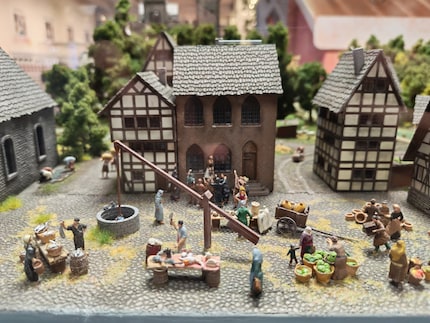
But the Honor 400 has even more AI tools to offer that other smartphones already have. For example, the ability to remove things from images. This works well for reflections in windows - apart from the edges of the image.
The AI also reliably recognises passers-by in Hamburg's Miniaturwunderland. At a distance, however, it fills the image areas with more or less suitable objects. This works better if, for example, only one or two people have snuck into a beach photo.
The AI zoom cannot replace the missing telephoto camera
The Honor 400 does not have a telephoto camera, but it does have a «AI Super Zoom». The image quality of the digital zoom is still ok at low magnifications. With 200 megapixels, the main camera also offers enough data for zooming in. At a maximum magnification of 30x, however, the AI also reaches its limits.

For comparison: This is the view from the same spot through the main camera.

The level of detail in the main camera is very high and the colours are usually natural-looking.

In my standard test picture, however, it mixes a lot of yellow into the picture when the sun is shining. Although this is not the rule, it still leaves a bland aftertaste.

The 12-megapixel ultra-wide-angle camera lags somewhat behind the main camera in terms of quality, but still delivers presentable photos. In the dark, I recommend the night mode for more details and balanced lighting.
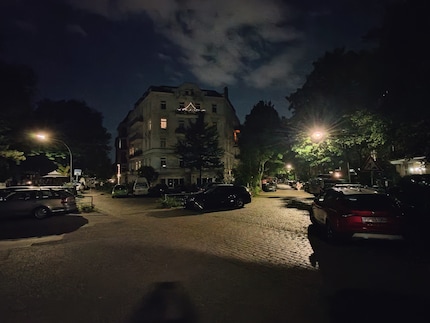
The front camera uses a 50-megapixel sensor. As with the main camera, the Honor uses «Pixel Binning». This means that several neighbouring pixels are combined into one. This theoretically increases the light sensitivity and ideally improves the image quality. As a result, the selfies look presentable even in the dark - and in night mode, which uses the display for lighting.
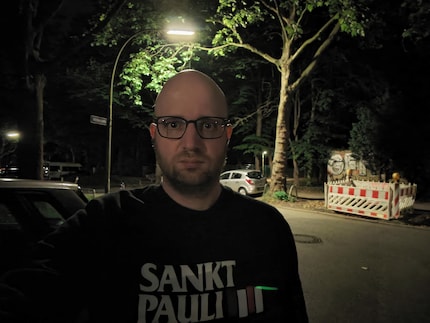
Mid-range smartphone aims to alleviate travel sickness
The Honor 400 proves to be a good mid-range smartphone with its other features. Its 6.55-inch AMOLED display has a high resolution of 2736 × 1264 pixels and offers a modern refresh rate of up to 120 hertz. It is bright enough for use in sunshine. The plastic housing is protected against splash water in accordance with IP65.
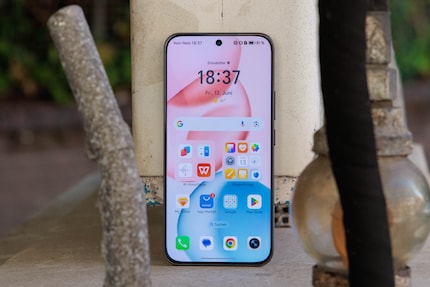
Honor delivers the 400 with Android 15 and provides the operating system with its MagicOS user interface. The manufacturer intends to provide Android updates for six years. While the pre-installed - but fortunately easy to uninstall - apps from third-party providers annoy me, Honor entices me with an exciting function: blue dots on the display are supposed to alleviate motion sickness. They are supposed to compensate for movements while travelling and provide fixed points of reference to prevent nausea when looking at the display. As I did not have a person with motion sickness available during the test, I cannot say whether the function helps.
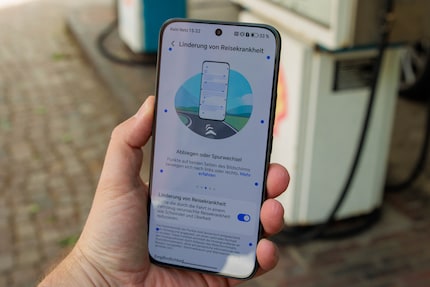
Enough power for AI and everyday life
Honor has installed the Snapdragon 7 Gen 3 and eight gigabytes of RAM in the 400. This allows the smartphone to run the AI tools mentioned above and has enough power for everyday use. However, the AI data processing does not always take place directly on the smartphone but also in the cloud. The user interface runs smoothly and apps launch quickly.
The Honor 400 also performs well in comparison with other mid-range smartphones. The Nothing Phone (3a) with the nominally better Snapdragon 7s Gen leaves it behind in terms of graphics performance (GPU) and is almost on a par in terms of CPU. Samsung's in-house Exynos chipset in the Galaxy A56 proves to be more powerful in both categories.
Battery does not perform well when tested
The battery of the Honor 400 is comparatively large at 5300 mAh. It recharges with up to 66 watts using SuperCharge fast charging technology. A completely empty battery is already at around 44 per cent after 15 minutes.
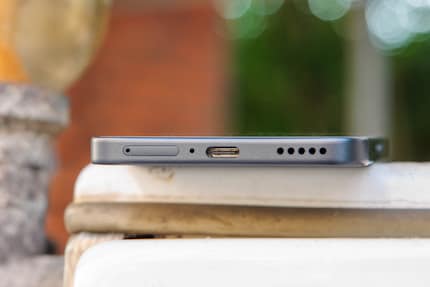
The result of the battery test looks less good: Work 3.0 from PCMark determines a below-average 8:35 hours. The two other smartphones in the benchmark comparison achieve better results despite their smaller batteries.
In a nutshell
A new AI tool alone is not enough
The Honor 400 proves to be a very usable mid-range smartphone. Its display is very good, its cameras deliver presentable photos and the performance is more than suitable for everyday use. The AI tools are nice to helpful gimmicks that sometimes work very well.
The pre-installed apps from third-party providers are annoying, but are quickly removed. The update period is long. The biggest annoyance in my eyes is the comparatively short battery life. The main problem for the Honor 400, however, is that it has a comparatively Samsung Galaxy A56 or the Nothing Phone (3a) are already more attractive smartphones for less money.
Pro
- Display
- Partly helpful AI tools
Contra
- Short battery life
- Annoying apps from third-party providers
- no telephoto camera

As a primary school pupil, I used to sit in a friend's living room with many of my classmates to play the Super NES. Now I get my hands on the latest technology and test it for you. In recent years at Curved, Computer Bild and Netzwelt, now at Digitec and Galaxus.



